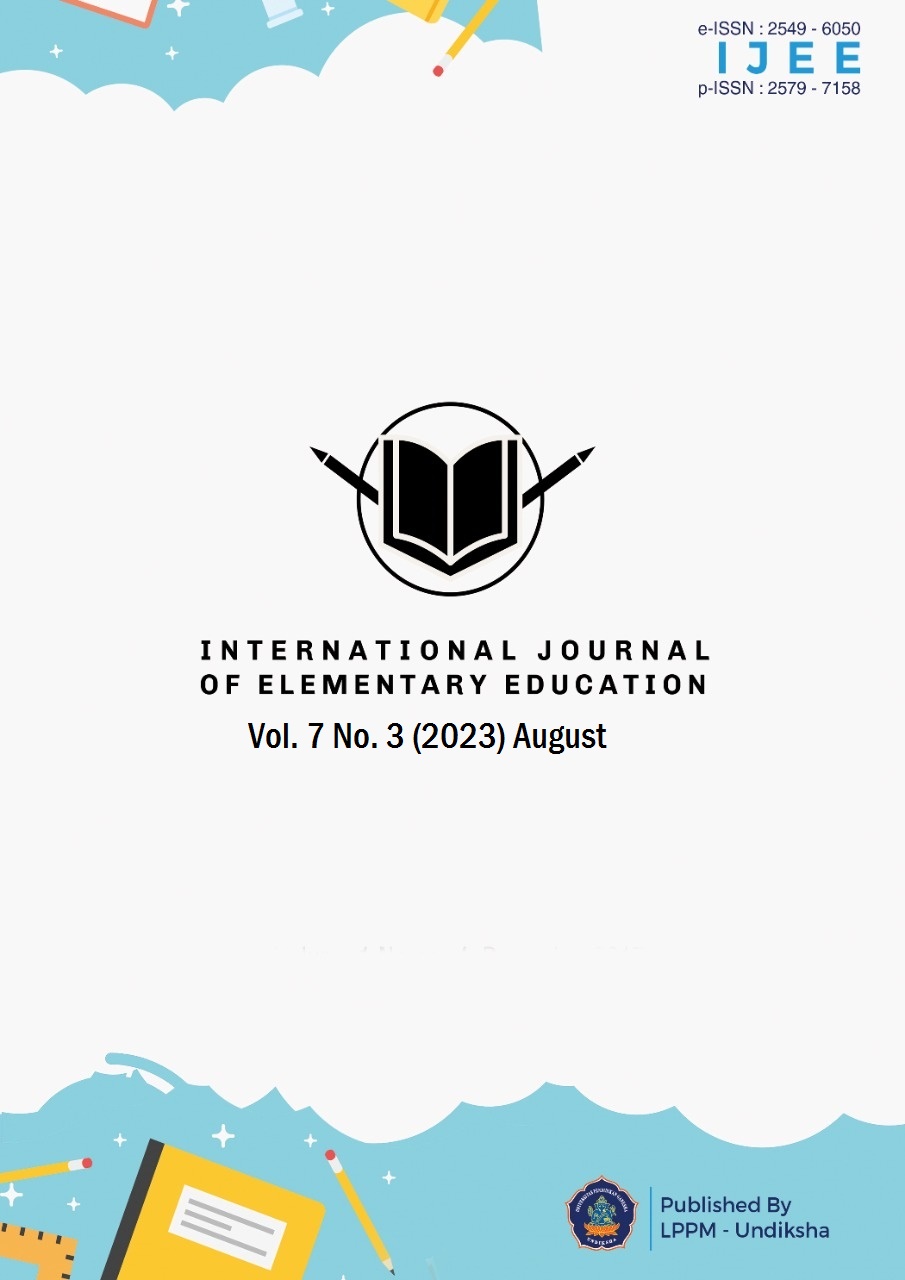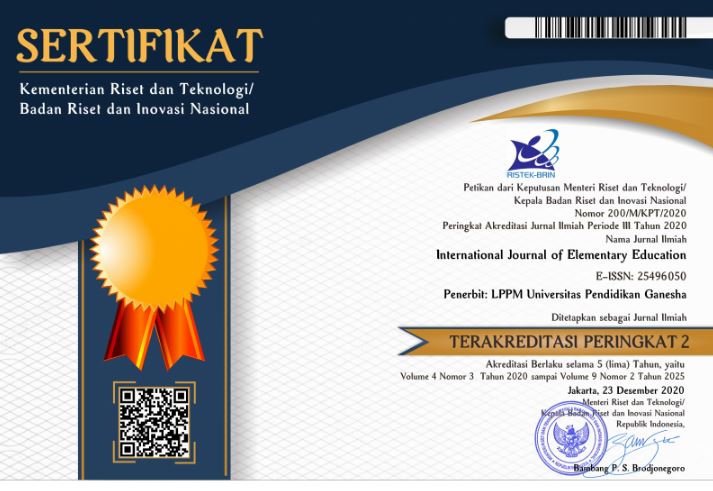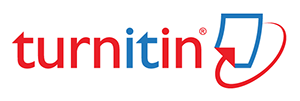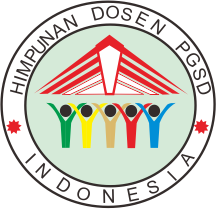E-Learning Using the Flipped Classroom Model-Based Teachmint Application and its Impact on Student Science Learning Outcomes
DOI:
https://doi.org/10.23887/ijee.v7i3.59262Keywords:
e-Learning, Flipped Classroom Model, Teachmin Application, Science Learning OutcomesAbstract
The lack of teachers' ability to create science learning media that is integrated with technology and information for grade V elementary schools prompted this research. The purpose of this research is to create a valid, practical and effective e-Learning product for the fifth grade science class in elementary schools. The research method used is Research and Development and refers to the ADDIE development model. Data collection techniques are divided into 2, specifically Qualitative and Quantitative data. Qualitative data had been received from suggestions and comments by means of validators and practitioners. The media became validated by 2 material professional lecturers, 2 media professional lecturers, and 1 language professional lecturer, and tested by 2 instructors and 10 students for practicality, and 31 college students for effectiveness. Quantitative information was acquired from the results of validator and practitioner questionnaire exams. Data analysis techniques uses a Likert scale and a paired sample t-test. The results of the validation and testing of science lessons show that the Media Media e-Learning based on the Flipped Classroom Model using the Teachmint application on Ecosystem Theme 5 is said to be very valid with a score of 91, very practical with a value of 92.5 and very effective 92.1. Based on the results of the data acquisition, it shows that e-Learning using the Teachmint application for science learning outcomes is considered very valid, very practical, and very effective in learning science in elementary schools.
References
Agustina, A. (2022). Meningkatkan Hasil Belajar Siswa Kelas V Sd Negeri 004 Belakang Padang Materi Pesawat Sederhana Dengan Menggunakan Metode Demonstrasi Dan Media Pembelajaran Yang Tepat. Elementary: Jurnal Inovasi Pendidikan Dasar, 2(4), 267–275. https://doi.org/10.51878/elementary.v2i4.1684. DOI: https://doi.org/10.51878/elementary.v2i4.1684
Aidoo, B., Tsyawo, J., Quansah, F., & Boateng, S. K. (2022). Students’ Learning Experiences in a Flipped Classroom: A Case Study in Ghana. International Journal of Education and Development Using Information and Communication Technology, 18(1), 67–85. https://eric.ed.gov/?id=EJ1345826.
Al-Jedaiah, M. (2020). Knowledge management and e-learning effectiveness: Empirical evidence from Jordanian Higher Education Institutions. International Journal of Emerging Technologies in Learning (IJET, 15(5), 50–62. https://www.learntechlib.org/p/217134. DOI: https://doi.org/10.3991/ijet.v15i05.11653
Alfehaid, A. F., Othman, Y. M., & Omar, A. A. A. (2023). The Impact Of The Use Of Flipped Classrooms And E-Learning Strategies On Academic Achievement And Student Satisfaction. Journal Of Positive Psychology And Wellbeing, 311–330. https://www.journalppw.com/index.php/jppw/article/view/15427.
Anugrah, A., Ibrahim, N., & Sukardjo, M. (2020). How Flipped Classroom Helps The Learning In The Times Of Covid-19 Era? Jtp-Jurnal Teknologi Pendidikan, 22(3), 151–158. https://doi.org/10.21009/jtp.v22i3.17555. DOI: https://doi.org/10.21009/jtp.v22i3.17555
Chanaa, A. (2021). E-learning Text Sentiment Classification Using Hierarchical Attention Network (HAN. International Journal of Emerging Technologies in Learning (IJET, 16(13), 157–167. https://doi.org/10.3991/ijet.v16i13.22579. DOI: https://doi.org/10.3991/ijet.v16i13.22579
Chen, C.-C. (2021). Effects Of Flipped Classroom On Learning Outcomes And Satisfaction: An Experiential Learning Perspective. Sustainability, 13(16), 9298. https://doi.org/10.3390/su13169298. DOI: https://doi.org/10.3390/su13169298
Chiu, T. K. (2022). Applying The Self-Determination Theory (Sdt) To Explain Student Engagement In Online Learning During The Covid-19 Pandemic. Journal Of Research On Technology In Education, 54(Sup1), 14– 30. https://doi.org/10.31004/edukatif.v3i5.695. DOI: https://doi.org/10.1080/15391523.2021.1891998
Chrismawati, M., Septiana, I., & Purbiyanti, E. D. (2021). Peningkatan Hasil Belajar Melalui Model Flipped Classroom Berbantuan Media Power Point dan Audio Visual di Sekolah Dasar Mirna. Edukatif: Jurnal Ilmu Pendidikan, 3(5), 1928–2934. https://doi.org/10.31004/edukatif.v3i5.695. DOI: https://doi.org/10.31004/edukatif.v3i5.695
Dani, N. R., Farida, F., & Fitria, Y. (2021). Pengembangan Bahan Ajar Tematik Terpadu Berbasis Life Skill Dengan Menggunakan Model Project Based Learning Di Sekolah Dasar. Jurnal Basicedu, 5(5), 3431–3444. https://doi.org/10.31004/basicdu.v5i5.1367. DOI: https://doi.org/10.31004/basicedu.v5i5.1367
Danial, M. (2022). Peningkatan Hasil Belajar Siswa Dalam Mengunkapkan Expression Of Sympathy Melalui Model Pmpdr Dan Aplikasi Teachmint (Vol. 2, Issue 3). Jurnal Inovasi Penelitian Tindakan Kelas Dan Sekolah. https://doi.org/10.51878/action.v2i3.1441. DOI: https://doi.org/10.51878/action.v2i3.1441
Denan, Z., Munir, Z. A., Razak, R. A., Kamaruddin, K., & Sundram, V. P. K. (2020). Adoption of technology on E-learning effectiveness. Bulletin of Electrical Engineering and Informatics, 9(3), 1121–1126. https://doi.org/10.11591/eei.v9i3.1717. DOI: https://doi.org/10.11591/eei.v9i3.1717
Du, Y. (2020). Study on Cultivating College Students’ English Autonomous Learning Ability under the Flipped Classroom Model. English Language Teaching, 13(6), 13–19. https://eric.ed.gov/?id=EJ1255502. DOI: https://doi.org/10.5539/elt.v13n6p13
Encarnacion, R. F. E., Galang, A. A. D., & Hallar, B. J. A. (2021). The impact and effectiveness of e-learning on teaching and learning. Online Submission, 5(1), 383–397. https://eric.ed.gov/?id=ED613533. DOI: https://doi.org/10.25147/ijcsr.2017.001.1.47
Febrianto, P. T., Mas’udahdah, S., & Megasari, L. A. (2020). Implementation of Online Learning during the Covid-19 Pandemic on Madura Island, Indonesia. International Journal of Learning, Teaching and Educational Research, 19(8), 233–254. https://doi.org/10.26803/ijlter.19.8.13. DOI: https://doi.org/10.26803/ijlter.19.8.13
Girmen, P., & Kaya, M. F. (2019). Using The Flipped Classroom Model In The Development Of Basic Language Skills And Enriching Activities: Digital Stories And Games. International Journal Of Instruction, 12(1), 555–572. https://eric.ed.gov/?id=EJ1201167. DOI: https://doi.org/10.29333/iji.2019.12136a
Gladden, M. E. (2019). Who Will Be The Members Of Society 5.0? Towards An Anthropology Of Technologically Posthumanized Future Societies. Social Sciences, 8(5), 148. https://doi.org/10.3390/socsci8050148. DOI: https://doi.org/10.3390/socsci8050148
Haling, A., Sudirman, S., Nasruddin, N., Syamsuddin, S., & Halik, A. (2022). Development of Character-Based Science Teaching Materials Using the Webbed Model to Improve Students’ Creative Thinking Skills. Journal of Educational Science and Technology (EST), 8(3), 172. https://doi.org/10.26858/est.v8i3.39360. DOI: https://doi.org/10.26858/est.v8i3.39360
Hardianto, H., & Baharuddin, M. R. (2019). Efektifitas Penerapan Model Pembelajaran Paikem Gembrot Terhadap Peningkatan Hasil Belajar Mahasiswa Pada Mata Kuliah Pembelajaran Matematika Sekolah Dasar. Cokroaminoto Journal Of Primary Education, 2(1), 27–33. https://doi.org/10.30605/cjpe.212019.105. DOI: https://doi.org/10.30605/cjpe.212019.105
Hermawati, H., Jumroh, J., & Sari, E. F. P. (2021). Analisis Kemampuan Pemecahan Masalah Matematis Pada Materi Kubus Dan Balok Di Smp. Mosharafa: Jurnal Pendidikan Matematika, 10(1), 141–152. https://doi.org/10.31980/mosharafa.v10i1.874. DOI: https://doi.org/10.31980/mosharafa.v10i1.874
Hignasari, L. V, & Supriadi, M. (2020). Pengembangan E-Learning Dengan Metode Self Assessment Untuk Meningkatkan Hasil Belajar Matematika Mahasiswa Universitas Mahendradatta (Vol. 6, Issue 2). Jurnal Hasil Penelitian Dan Kajian Kepustakaan Di Bidang Pendidikan, Pengajaran Dan Pembelajaran. https://doi.org/10.33394/jk.v6i2.2476. DOI: https://doi.org/10.33394/jk.v6i2.2476
Ilsa, A., F, F., & Harun, M. (2020). Pengembangan Video Pembelajaran dengan Menggunakan Aplikasi Powerdirector 18 di Sekolah Dasar. Jurnal Basicedu, 5(1), 288–300. https://doi.org/10.31004/basicedu.v5i1.643. DOI: https://doi.org/10.31004/basicedu.v5i1.643
Ismail, R., Rifma, R., & Fitria, Y. (2021). Pengembangan Bahan Ajar Tematik Berbasis Model Pjbl Di Sekolah Dasar. Jurnal Basicedu, 5(2), 958–965. https://doi.org/10.31004/basicdu.v5i1.643. DOI: https://doi.org/10.31004/basicedu.v5i2.808
Jdaitawi, M. (2019). The Effect Of Flipped Classroom Strategy On Students Learning Outcomes. International Journal Of Instruction, 12(3), 665–680. https://eric.ed.gov/?id=EJ1220207. DOI: https://doi.org/10.29333/iji.2019.12340a
Kumar, V., & Sharma, D. (2020). E-learning theories, components, and cloud computing-based learning platforms. International Journal of Web-Based Learning and Teaching Technologies (IJWLTT, 16(3), 1–16 10 4018 20210501 1. DOI: https://doi.org/10.4018/IJWLTT.20210501.oa1
Lusidawaty, V., Fitria, Y., Miaz, Y., & Zikri, A. (2020). Pembelajaran IPA dengan strategi pembelajaran inkuiri untuk meningkatkan keterampilan proses sains dan motivasi belajar siswa di sekolah dasar. Jurnal Basicedu, 4(1), 168–174. https://doi.org/10.31004/basicedu.v4i1.333. DOI: https://doi.org/10.31004/basicedu.v4i1.333
Maskar, S., & Dewi, P. S. (2020). Praktikalitas Dan Efektifitas Bahan Ajar Kalkulus Berbasis Daring Berbantuan Geogebra. Jurnal Cendekia: Jurnal Pendidikan Matematika, 4(2), 888–899. https://doi.org/10.31004/cendekia.v4i2.326. DOI: https://doi.org/10.31004/cendekia.v4i2.326
Maula, N. R., & Fatmawati, L. (2022). Pengembangan Media Pembelajaran Kayaku (Kayanya Alam Negeriku) Berbasis STEM Kelas IV Sekolah Dasar. Jurnal Ilmiah Sekolah Dasar, 4(1), 97. https://doi.org/10.23887/jisd.v4i1.22351. DOI: https://doi.org/10.23887/jisd.v4i1.22351
Mawardi, M. (2019). Rambu-rambu Penyusunan Skala Sikap Model Likert untuk Mengukur Sikap Siswa. Scholaria: Jurnal Pendidikan Dan Kebudayaan, 9(3), 292–304. https://doi.org/10.24246/j.js.2019.v9.i3.p292-304. DOI: https://doi.org/10.24246/j.js.2019.v9.i3.p292-304
Mirlanda, E. P., Nindiasari, H., & Syamsuri, S. (2019). Pengaruh Pembelajaran Flipped Classroom Terhadap Kemandirian Belajar Siswa Ditinjau Dari Gaya Kognitif Siswa. Symmetry: Pasundan Journal of Research in Mathematics Learning and Education, 4, 38–49. https://doi.org/10.23969/symmetry.v4i1.1638. DOI: https://doi.org/10.23969/symmetry.v4i1.1638
Onyema, E. M., Choudhury, T., Sharma, A., Atonye, F. G., Phylistony, O. C., & Edeh, E. C. (2021). Effect Of Flipped Classroom Approach On Academic Achievement Of Students In Computer Science. Data Driven Approach Towards Disruptive. Proceedings Of Midas, 521–533. https://link.springer.com/chapter/10.1007/978-981-15-9873-9_41. DOI: https://doi.org/10.1007/978-981-15-9873-9_41
Pallavi, D. R., Ramachandran, M., & Chinnasamy, S. (2022). An Empirical Study On Effectiveness Of E-Learning Over Conventional Class Room Learning–A Case Study With Respect To Online Degree Programmes In Higher Education. Recent Trends In Management And Commerce, 3(1), 25–33. https://doi.org/10.46632/rmc/3/1/5. DOI: https://doi.org/10.46632/rmc/3/1/5
Puspitarini, Y. D., & Hanif, M. (2019). Using learning media to increase learning motivation in elementary school. Anatolian Journal of Education, 4(2), 53–60. https://doi.org/10.29333/aje.2019.426a. DOI: https://doi.org/10.29333/aje.2019.426a
Qiftiyah, M. (2023). Muatan Hots Pada Pembelajaran Tematik Materi Ipa Kelas 5 Sekolah Dasar. Scholaria: Jurnal Pendidikan Dan Kebudayaan, 13(1), 28–38. https://ejournal.uksw.edu/scholaria/article/view/6272. DOI: https://doi.org/10.24246/j.js.2023.v13.i1.p28-38
Rahmelina, L., Firdian, F., Maulana, I., Aisyah, H., & Na‘Am, J. (2019). The Effectiveness Of The Flipped Classroom Model Using E-Learning Media In Introduction To Information Technology Course. International Journal Of Emerging Technologies In Learning (Ijet, 14(21), 148–162. https://www.learntechlib.org/p/217200. DOI: https://doi.org/10.3991/ijet.v14i21.10426
Rasmitadila, R., Aliyyah, R. R., Rachmadtullah, R., Samsudin, A., Syaodih, E., Nurtanto, M., & Tambunan, A. R. S. (2020). The Perceptions Of Primary School Teachers Of Online Learning During The Covid-19 Pandemic Period. Journal Of Ethnic And Cultural Studies, 7(2), 90–109. https://www.jstor.org/stable/48710085. DOI: https://doi.org/10.29333/ejecs/388
Ristanto, R., Rusdi, R., Mahardika, R., Darmawan, E., & Ismirawati, N. (2020). Digital Flipbook Imunopedia (DFI): A Development in Immune System e-Learning Media. International Association of Online Engineering. https://www.learntechlib.org/p/218401. DOI: https://doi.org/10.3991/ijim.v14i19.16795
Rofiqoh, I., Puspitasari, D., & Nursaidah, Z. (2020). Pengembangan Game Math Space Adventure Sebagai Media Pembelajaran Pada Materi Pecahan Di Sekolah Dasar. Lentera Sriwijaya: Jurnal Ilmiah Pendidikan Matematika, 2(1), 41–54. https://doi.org/10.36706/jls.v2i1.11445. DOI: https://doi.org/10.36706/jls.v2i1.11445
Santos, A. I., & Serpa, S. (2020). Flipped Classroom For An Active Learning. Journal Of Education And E-Learning Research, 7(2), 167–173. https://eric.ed.gov/?id=EJ1263827. DOI: https://doi.org/10.20448/journal.509.2020.72.167.173
Shana, Z., & Alwaely, S. (2021). Does the Flipped Classroom Boost Student Science Learning and Satisfaction? A Pilot Study from the UAE. International Journal of Instruction, 14(4), 607–626. https://eric.ed.gov/?id=EJ1318982. DOI: https://doi.org/10.29333/iji.2021.14435a
Sosa Díaz, M. J., Guerra Antequera, J., & Cerezo Pizarro, M. (2021). Flipped classroom in the context of higher education: Learning, satisfaction and interaction. Education Sciences, 11(8), 416. https://doi.org/10.3390/educsci11080416. DOI: https://doi.org/10.3390/educsci11080416
Suartama, I. K., Triwahyuni, E., Abbas, S., Hastuti, W. D., Subiyantoro, S., & Salehudin, M. (2020). Development of E-Learning Oriented Inquiry Learning Based on Character Education in Multimedia Course. European Journal of Educational Research, 9(4), 1591–1603. https://eric.ed.gov/?id=EJ1272412. DOI: https://doi.org/10.12973/eu-jer.9.4.1591
Triatmojo, W., & Priyadi, M. (2021). Implementation Of Flipped Classroom On Experiences In Online Learning During Pandemic Covid-19 For A Project-Base Vocational Learning Guide. Journal Of Physics: Conference Series, 1842(1), 12019. https://doi.org/10.1088/1742-6596/1842/1/012019. DOI: https://doi.org/10.1088/1742-6596/1842/1/012019
Vyas, L., & Butakhieo, N. (2021). The Impact Of Working From Home During Covid-19 On Work And Life Domains: An Exploratory Study On Hong Kong. Policy Design And Practice, 4(1), 59–76. https://doi.org/10.1080/25741292.2020.1863560. DOI: https://doi.org/10.1080/25741292.2020.1863560
Widya, N., & Adri, R. F. (2021). Pengembangan Bahan Ajar Virtual Learning Model Pada Mata Kuliah Hama Dan Penyakit Hutan Di Fakultas Kehutanan. Menara Ilmu, 15(2). https://doi.org/10.31869/mi.v15i2.2595.
Yaniawati, P., Kariadinata, R., Sari, N., Pramiarsih, E., & Mariani, M. (2020). Integration of e-learning for mathematics on resource-based learning: Increasing mathematical creative thinking and self-confidence. International Journal of Emerging Technologies in Learning (IJET, 15(6), 60–78. https://doi.org/10.3991/ijet.v15i06.11915. DOI: https://doi.org/10.3991/ijet.v15i06.11915
Yulianti, Y. A., & Wulandari, D. (2021). Flipped Classroom: Model Pembelajaran Untuk Mencapai Kecakapan Abad 21 Sesuai Kurikulum 2013 (Vol. 7, Issue 2). Jurnal Hasil Penelitian Dan Kajian Kepustakaan Di Bidang Pendidikan, Pengajaran Dan Pembelajaran. https://doi.org/10.33394/jk.v7i2.3209. DOI: https://doi.org/10.33394/jk.v7i2.3209
Yuliyani, R., Rezeki, S., & Tama, B. J. (2023). Kajian Dan Opini Mahasiswa Terhadap Penggunaan Aplikasi Teachmint Pada Matakuliah Logika Matematika. Jurnal Indonesia: Manajemen Informatika Dan Komunikasi, 4(1), 321–326. https://doi.org/10.35870/jimik.v4i1.190. DOI: https://doi.org/10.35870/jimik.v4i1.190
Downloads
Published
How to Cite
Issue
Section
License
Copyright (c) 2023 Romi Kurniawan Romi Kurniawan, Yanti Fitria Yanti Fitria

This work is licensed under a Creative Commons Attribution-ShareAlike 4.0 International License.
Authors who publish with the International Journal of Elementary Education agree to the following terms:
- Authors retain copyright and grant the journal the right of first publication with the work simultaneously licensed under a Creative Commons Attribution License (CC BY-SA 4.0) that allows others to share the work with an acknowledgment of the work's authorship and initial publication in this journal.
- Authors are able to enter into separate, additional contractual arrangements for the non-exclusive distribution of the journal's published version of the work (e.g., post it to an institutional repository or publish it in a book), with an acknowledgment of its initial publication in this journal.
- Authors are permitted and encouraged to post their work online (e.g., in institutional repositories or on their website) prior to and during the submission process, as it can lead to productive exchanges, as well as earlier and greater citation of published work. (See The Effect of Open Access)









